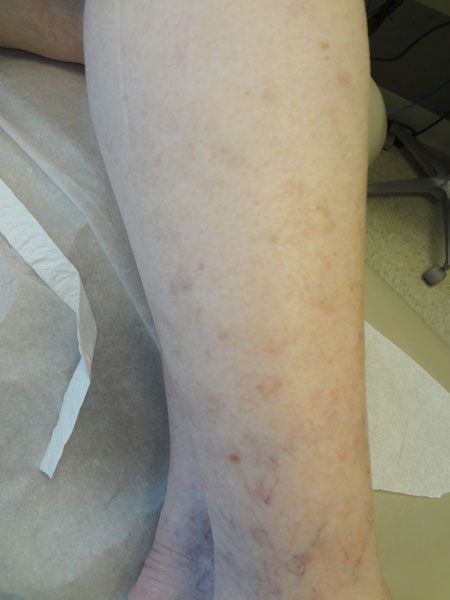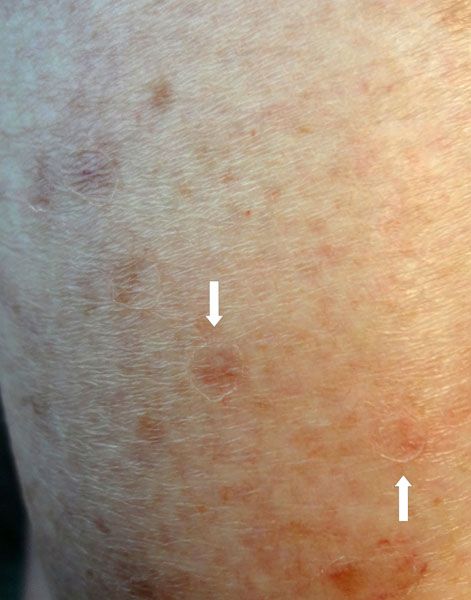Disseminated Superficial Actinic Porokeratosis
These oval, dyschromic macules surrounded by a palpable scale-like border are pathognomonic of disseminated superficial actinic porokeratosis, a disorder seen usually in those who have had considerable lifelong exposure to sunlight.


A 76-year-old woman was concerned about multiple brown spots on her legs and arms. These were asymptomatic and had been present, and increasing in number, for decades.
Key point: Close examination disclosed that the lesions were round to oval dyschromic macules, each of which was surrounded by a fine but clearly palpable scale-like border. This is pathognomonic for disseminated superficial actinic porokeratosis (DSAP). This disorder is seen primarily on upper and lower extremities in individuals who have had considerable sunlight exposure throughout their lives. The palpable border has a typical histologic appearance, which is useful to confirm the diagnosis.
Treatment: There is no absolutely reliable method of eliminating these lesions, although topical retinoids, topical 5-fluorouracil, topical imiquimod, and alpha-hydroxy acid lotion (such as lactic acid 12%) may be of some benefit.
Note: While DSAP is primarily a cosmetic issue, there is a small risk that any individual lesion may transform into squamous cell carcinoma. Periodic reevaluation is advised.